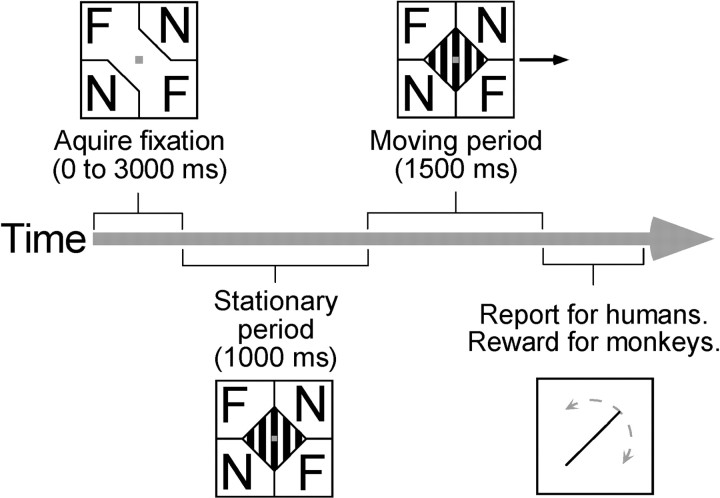Fig. 3.
Time course of stimulus presentation. Barber-diamond trials began with onset of stereoscopically defined 1 × 1° square (zero disparity relative to fixation plane). After fixation of this stereoscopic target was achieved, it was replaced by a 0.4 × 0.4° chromatically defined red target, and a stationary version of the stimulus appeared. After 1000 msec of static stimulus presentation, the grating was moved for 1500 msec. Trials were aborted if fixation deviated >0.5° from the fixation target. Upon successful completion of a trial, human subjects reported the direction of perceived motion by adjusting the orientation of a line (0.05 × 5°) using key presses. Perceived direction of motion was sampled at 15° intervals by this means. Monkeys were not required to make a report but, instead, were given a juice reward at the end of trials during which fixation was adequately maintained. Trial events and procedures were identical for other stimuli used with one exception; for circular gratings and monocular viewing conditions, the fixation target was always chromatically defined.

